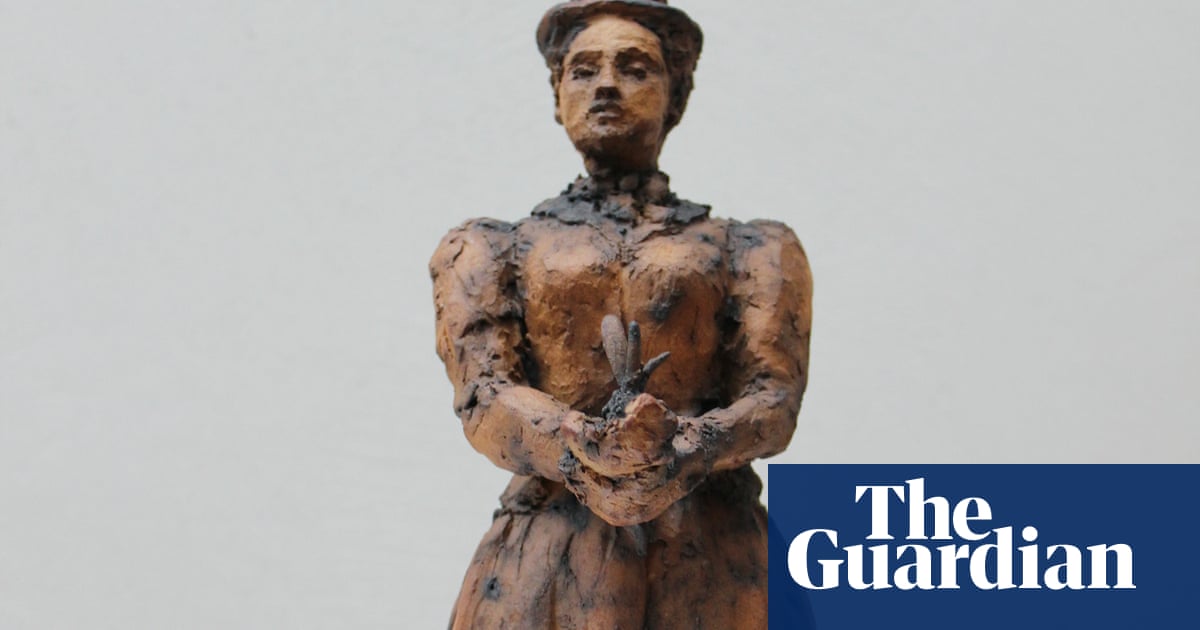She was a proto-feminist pioneer who blazed a trail for female gardeners and changed the face ofLondonby creating “green lungs” in the capital for Victorians suffering from pollution and overcrowding.
Now a charity is seeking to shine a light on Fanny Wilkinson, the UK’s first professional female landscape gardener, by unveiling the first ever statue of the suffragist at one of the 75 London parks she designed more than a century ago.
“Fanny was an incredibly important figure in her time – and she was really inspirational,” said Nicola Stacey, the director of Heritage of London Trust. “She trained as a gardener when women did not do so, and led the way for other women in being paid for her work, opening up opportunities for women in the profession of landscape design and gardening that, of course, many generations have since benefited from.”
In 1882, Wilkinson became the first female pupil of the newly formed Crystal Palace School of Landscape Gardening and Practical Horticulture: all her fellow students were male.
After graduating, she took an unpaid position as an “honorary” landscape gardener for the Metropolitan PublicGardens, Boulevard and Playground Association (MPGA), a new organisation founded by the philanthropist Lord Brabazon to facilitate the creation of public gardens and children’s playgrounds in London.
Two years later, in 1886, she had the courage – and self-belief – to write to Brabazon to say: “I feel it would be better for me to drop the ‘hon’ and make a charge which would fully cover all expenses.”
At this point, “she became the first professional female landscape gardener who was paid for her services, as opposed to advising for free”, Stacey said. “She then took on female employees and was a pioneering figure in the campaign for equal pay.”
In an interview for the Women’s Penny Paper in 1890, Wilkinson – who sat on the central committee for women’s suffrage with herfriend Millicent Fawcett– said: “I certainly do not let myself be underpaid as many women do. There are people who write to me and think because I am a woman I will ask less than a man. This I never do. I know my profession and charge accordingly, as all women should do.”
She struggled with men who did not respect her as a female boss: “Often my customers prefer that their own men should work under me. This is often a stumbling block, since the gardeners occasionally imagine they know better, and they are often stupid and pig-headed. I have great bother with them now and then.”
Wilkinson laid out 75 public gardens in London across a 20-year period, including parks in deprived, working-class areas such as Myatt’s Fields Park in Lambeth and Meath Gardens in Bethnal Green.
Stacey said: “The city was becoming increasingly industrialised and polluted and it needed these green lungs, these open spaces she created for people to walk and enjoy themselves in the fresh air.
“Fanny really understood how to design a beautiful public park in London and that’s why they have lasted – and thrived – the way they have.”
The trust, which is in the process of restoring 24 historic drinking fountains across the capital, has worked with Wandsworth council and other local community partners to commission a bronze statue of Wilkinson by the sculptor Gillian Brett. It will be installed on a Victorian water fountain in Coronation Gardens in Wandsworth, south west London on 3 July.
“The fountain was totally derelict and it had lost its allegorical figure over the water source,” said Stacey. “So this was a wonderful opportunity to return a figure to the fountain, but to choose one of real significance: Fanny was the landscape designer who laid out Coronation Gardens. It’s a commemoration of her work in one of the parks that benefited from her design and her creativity.”
Stacey hopes the statue will reassert Wilkinson’s rightful place in history as “the country’s pioneering female landscape designer” who, aside from being honoured with ablue plaquein 2022, has been “fairly little recognised”.
“Over the course of her career, Fanny changed the face of London,” she said.
In 1904, Wilkinson left the MPGA to become the first female principal of Swanley Horticultural College, later established as a women-only college. She also co-founded the Women’s Agricultural and Horticultural International Union, which played a key role in establishing the Women’s Land Army of female farm workers during the first world war. She died at the age of 95 in 1951.
